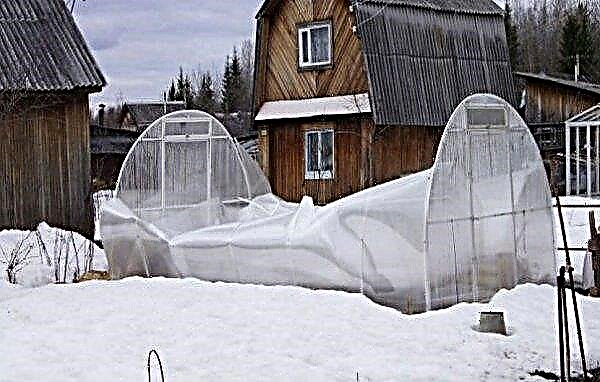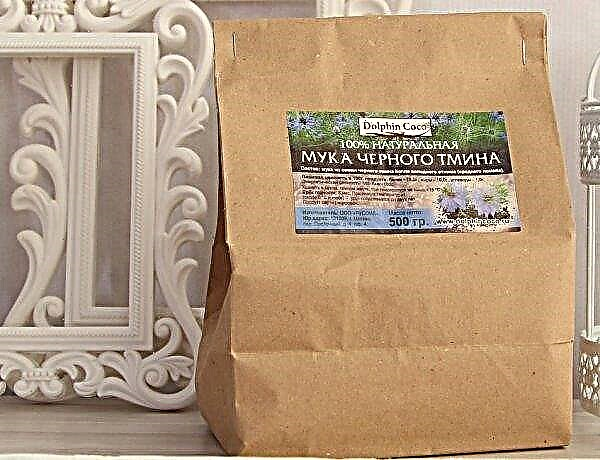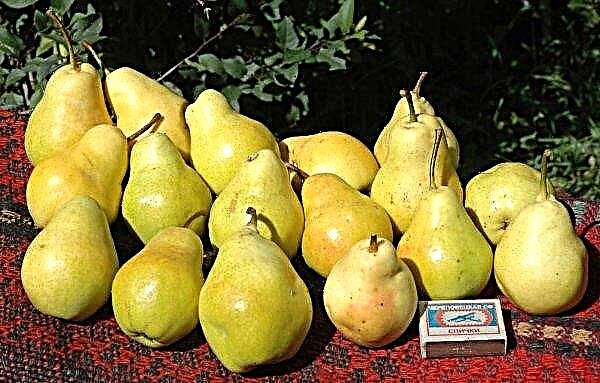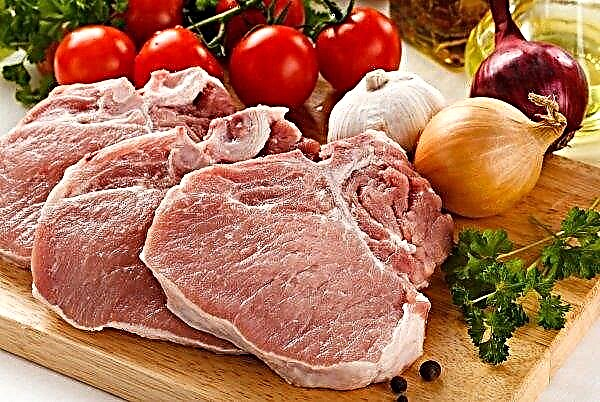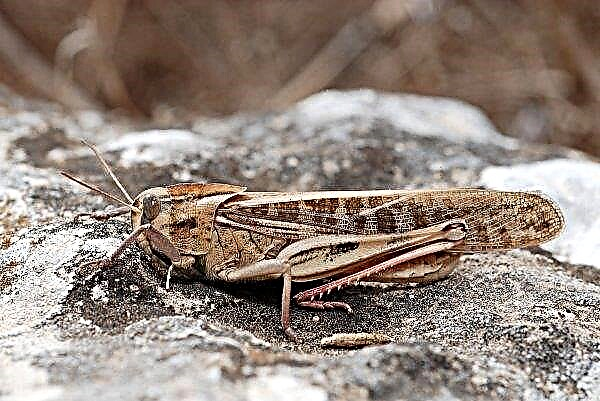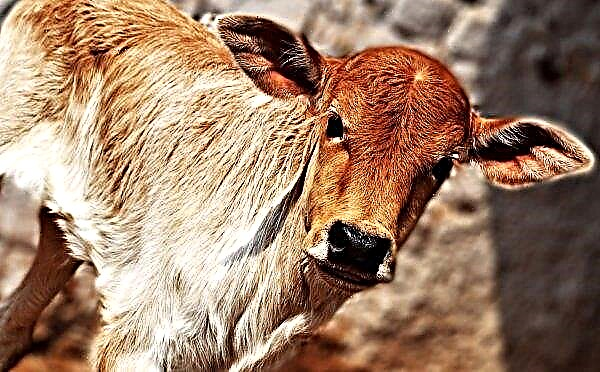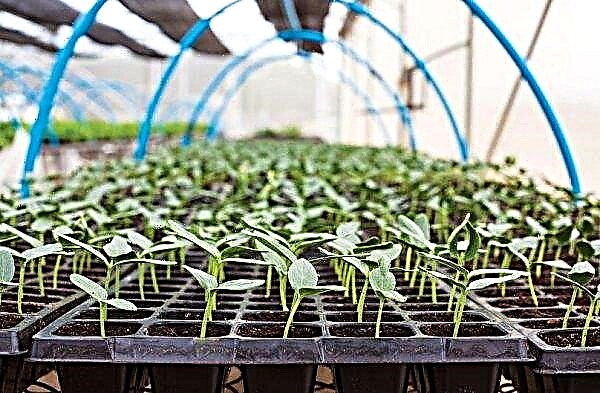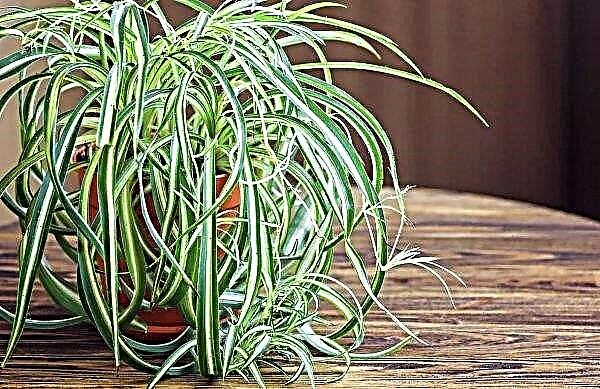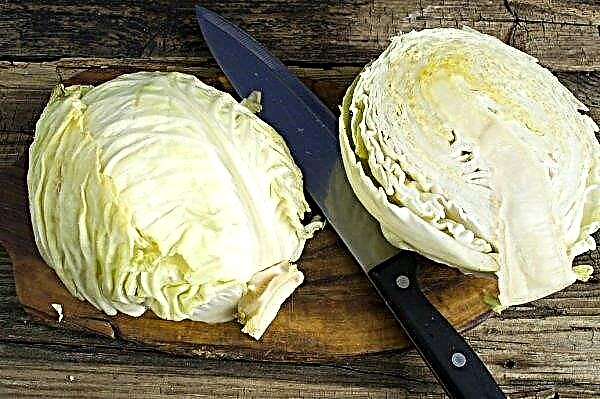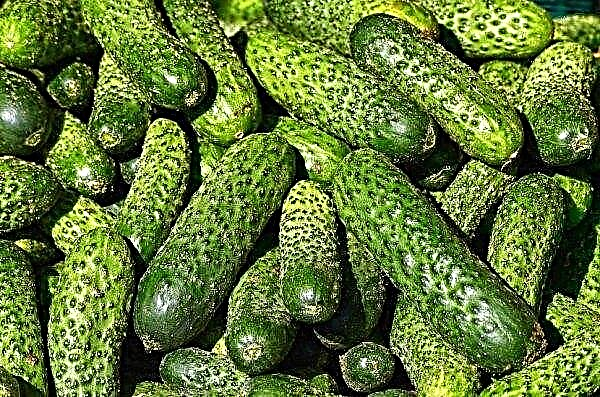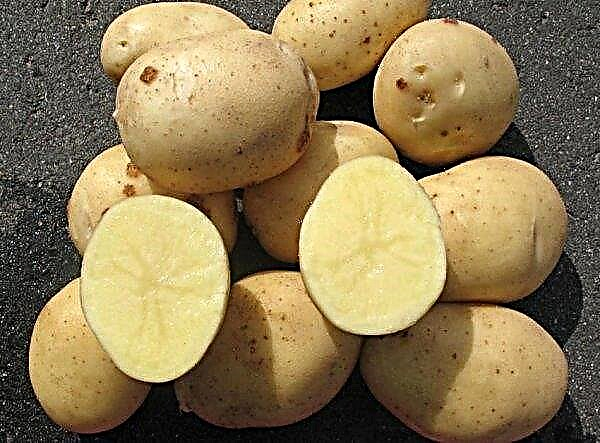Most plants acquire a red-amber hue only in the fall. But there is an unusual form of arborvitae, which has such a color throughout the year. Amber Glove variety is a unique dwarf culture that annually attracts the attention of gardeners. Growing it yourself is not difficult if you stick to all the technologies listed in this article.
Botanical tree description
Thuja occidentalis Amber Glow belongs to the ornamental plants, which are often planted in garden areas. This crop belongs to dwarf shrubs. Thuja western varieties Amber Glove is highly resistant to frost. Trees can withstand frosts down to -30 ° C.
Did you know? Thuja aromatic oil is used by famous brands “Hugo Boss” and “Ralf Loren” for the production of perfumes. This is due to the fact that this tree has a very persistent aroma.
Description of the Amber Glove plant:
- Crohn is characterized by a spherical shape.
- Adult plants grow up to 90 cm in height.
- The crown diameter is about 1 m.
- The needles have a scaly structure. In summer, it has a yellow tint, and closer to autumn it acquires a rich amber-orange color.
Landing
Before embarking on a landing, you need to choose the best place. Western thuja cultivar Amber Glow prefers lighted areas. You can also plant plants in partial shade. It is undesirable to plant planting material in places where sunlight does not penetrate. This will not only slow down the growth of the bush, but also make the shade of the needles more pale.
The planting process begins in mid-September. The distance between plants depends on how you intend to use the crop. To equip the garden plot as a recreation area, you can adhere to an interval of 2 m. If a hedge is created, the distance between the seedlings should be 1.5 m.Important! It is better to make a purchase of planting material in nurseries. In such institutions, plants are stored under optimal conditions and properly looked after.
It is not recommended to plant the thuja western in areas where groundwater is close to the soil surface (about 2 m) or waterlogging often occurs (due to water accumulation after irrigation or precipitation). Amber Glow prefers fertile loamy lands. The optimum level of acidity is 6.5–8.
The optimum level of acidity is 6.5–8.
If you choose planting material, then consider the following features:
- lack of signs of diseases and pests: spots, cracks, dryness, etc .;
- height - up to 20 cm;
- developed root system, at least 10 cm long.
Step-by-step landing technology:
- Dig holes 10 x 30 cm in size.
- Put crushed stone or expanded clay on the bottom (layer up to 5 cm) to create high-quality drainage.
- Pour a little peat (not more than 3 kg) to saturate the soil with useful substances.
- Place the seedling and spread the roots.
- Sprinkle with soil and compact.
- Water each bush with 10 liters of water.

Thuja care
In order for the tree to develop quickly and evenly, it is necessary to properly care for it. Watch the quality of irrigation so that the soil does not get too wet. Top dressing is applied no more than 2 times per season. Loosening and mulching the soil - one of the most important stages in the care. Also do not forget that the beauty of the crown depends on regular pruning.
Did you know? Thuja extracts have anti-inflammatory properties. In the process of research, it was proved that these substances can be used to suppress type A influenza virus.
Watering and feeding
Despite the fact that the western thuja of Amber Glove variety needs well-moistened soils, it does not tolerate moisture stagnation, so plants need to be watered no more than once every 2 weeks. The process uses at least 20 liters of water per tree.
Top dressing is carried out several times:
- organic fertilizers are applied in the spring (5 kg of urea or humus per 1 m²);
- in the fall, superphosphate is used (100 g per 10 liters of water). Spread the entire volume evenly over 1 m².

Loosening and mulching
In order for nutrients and water to better penetrate the root system, it is necessary to loosen the topsoil before the procedures. Depth should be no more than 6 cm, so as not to damage the roots of the plant. Do not forget to remove weeds that not only slow down the growth of the bush, but also provoke the development of diseases and pests.
Mulching the soil for the first time during planting. After that, the trunk circle is covered with peat or straw with humus in mid-October. This allows moisture to not evaporate and protects the roots from hypothermia in winter.
Pruning
In the process of caring for the thuja variety Amber Glove, it is necessary to form a crown. This allows you to maintain a beautiful plant shape and make the garden more attractive. The formation of the crown is carried out in the spring, at the end of March. In the process, too long shoots and young buds are cut, which can ruin the appearance of the tree. Also, in early March, sanitary pruning should be carried out. During the procedure, dry, diseased and damaged branches are completely removed.
Important! You can’t cut the trees in the fall, since weakened plants will not be able to recover before the onset of winter.
Growth Features
Western thuja cultivar Amber Glow belongs to slowly growing crops. The diameter of the plant increases by only 7 cm per season. A complete stop of growth occurs 10 years after planting. Trees are durable. Shelf life - at least 200 years.
 During the year, the growth of the crown is only 6 cm.
During the year, the growth of the crown is only 6 cm.
Possible diseases and pests
Thuja cultivar Amber Glove has good resistance to diseases and pests. However, in rare cases, with poor-quality care, it can be affected by rot (if the optimum level of humidity is exceeded), fusarium and necrosis.
Prevention of diseases and pests is as follows:
- Stick to the correct planting density.
- Monitor the degree of soil moisture. After watering, the soil should be moist at a depth of 20 cm.
- Remove weeds.
- Trim diseased branches so that signs do not spread throughout the plant.
- Every year, in mid-September, spray the bushes with a solution of Bordeaux liquid (30 g per 10 liters of water).

In the fight against rot, which manifests itself in the form of dark spots on the needles and trunk, copper sulfate (20 g per 10 liters of water) is used. Against fusarium, the signs of which are the appearance of red spots on the bushes (can lead to complete drying of the plant), use “Fundazole” (20 g per 10 liters of water). The treatment of necrosis (the appearance of brown spots and the dying off of shrubs) consists in the treatment of Actellicum (1 ampoule per 5 liters of water). Spraying against diseases is carried out 1 time per month.
Among the pests that often affect the thuja shrubs of Western Amber Glow, there are:
- aphids thuy. Against it carry out spraying "Karbofos" (40 g per 6 liters of water);
- berry bug. In the fight against it, “Khom” is used (2 ampoules per 4 liters of water);
- snails. Pest control consists in spraying with Abiga-Peak (50 ml per 10 l of water);
- slugs. In the fight against parasites, spraying is carried out with a copper-containing Hom (40 g per 10 l of water);
- false shield. Against the pest, Topsin-M spraying is carried out (70 g per 5 l of water).

The use of wood in landscape design
Western thuja cultivar Amber Glove is very often used in landscaping. It is planted to create an unusual recreation area with a shadow in the garden. Plants with an orange crown in the shape of a ball give the site an aesthetic appearance. You can also plant thuja as a hedge to protect the garden from prying eyes. Bright flowers, ferns and various fruit trees combine very well with these shrubs.
So, now you know that it is easy to grow a western thuja at home. If you adhere to all the rules for planting and care, then lush bright shrubs will constantly attract the attention of others and create comfort in the garden.

